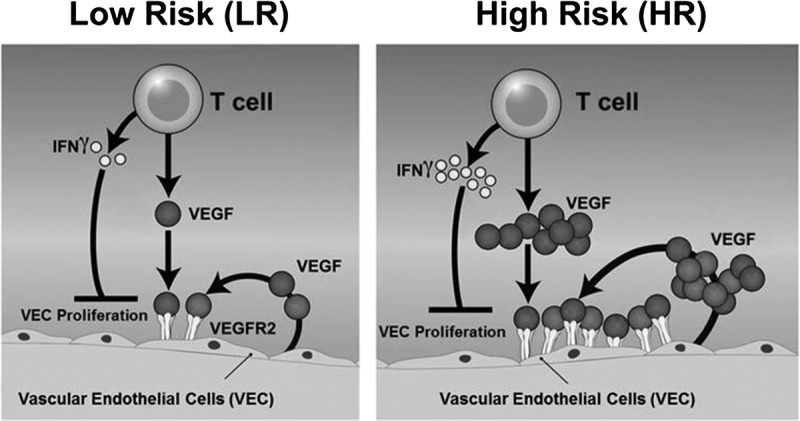FIGURE 5.

Schematic diagram of T cell mediated angiogenesis. In our vitro model, T cells promote angiogenesis in 3 ways: (1) conv T cells induce VEC proliferation by releasing the angiogenic factor VEGF-A. T cells collected from HR recipients (right) are more proangiogenic than T cells obtained from LR grafted mice (left); (2) VEC autocrine secretion of VEGF-A and VEGF-C promote VEC proliferation; and (3) VECs upregulate expression of VEGF-R2, which is the receptor for VEGF-A and VEGF-C. The release of these ligands and increase in expression of VEGF-R are more pronounced in the HR setting than LR setting. Our data also show an antiangiogenic effect of IFNγ; however, the balance between T cell–induced VEGF-mediated proangiogenic, and IFNγ antiangiogenic, mechanisms appears to lie in favor of the proangiogenic effects.
